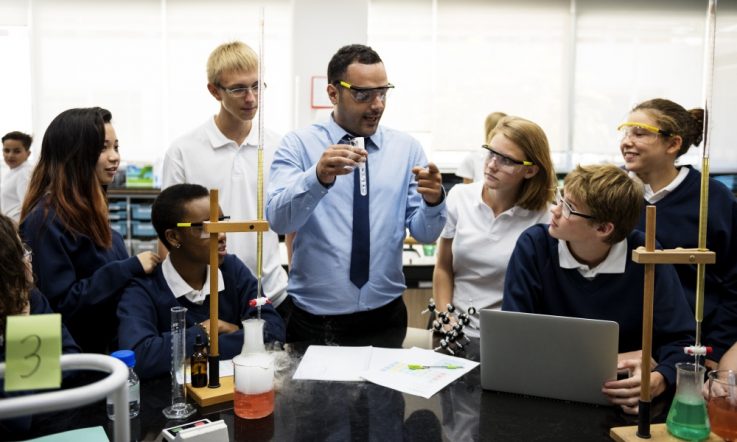The New South Wales Curriculum Review Interim Report – ‘Nurturing Wonder and Igniting Passion: Designs for a future school curriculum' proposes 15 broad directions for reform.
During the initial consultation period with teachers, leaders, professional associations and a range of education stakeholders, lead reviewer Professor Geoff Masters – CEO of the Australian Council for Educational Research – said the ‘strong and consistent' message received was that change is required.
In a two-part series, Teacher is taking a closer look at some of the proposals. Our first article focused on curriculum content and deep learning. This final instalment explores curriculum flexibility and integrated learning.
To ensure the New South Wales K-12 curriculum properly prepares students for the challenges and opportunities they will face beyond school, reducing the amount of mandated content is only part of the solution, the report notes. The Review is also proposing changes to the structure of the curriculum.
The current curriculum's lack of flexibility was a recurring theme during consultations with teachers, school leaders, professional associations, parents and the wider community. ‘There was concern that the curriculum was inflexible in the sense that it told teachers what to teach, when to teach it, and how long to spend teaching it. This often constrained teachers' abilities to make decisions in the best interests of individual students.'
The report says research shows successful learning depends on teachers' professional judgements about how to adapt and tailor their teaching according to individuals' prior knowledge, needs and interests.
In its Review submission, the Mathematical Association of New South Wales says its members want more flexibility. ‘Currently teachers feel tied into teaching content to particular year levels regardless of the background knowledge of their students. If, for example, a teacher felt that there was a need to spend time reviewing content from previous years to better prepare their students for new learning then they should not feel under pressure to keep moving on.'
Reform Direction 5: Commit to the development of a more flexible school curriculum that does not specify when teachers should teach specific content and how long they should spend teaching it, but instead provides a framework that enables teachers to establish the points students have reached in their learning and to identify appropriate next steps in teaching and learning.
In many classrooms, the most advanced 10 per cent of students are typically five to six years ahead of the least advanced. However, the report says asking teachers to deliver a ‘lock-step' curriculum to mixed ability classes – Year 4 content for all Year 4 students, and so on – is particularly damaging to those at either end of the achievement scale. When assessed against year-level expectations, less advanced students may be labelled ‘D' students year after year even though they may be making progress in their learning, while the most advanced students may receive high grades while cruising and making little progress.
Meeting individual learners where they are
There were concerns that the current curriculum structure fails to recognise students' varying backgrounds, prior knowledge, experiences, starting points and individual needs. ‘One teacher simply said, “many kids are not ready for what we are trying to teach them” … [and another] “we have kids in Kindergarten who can easily do Year 3 maths … are we giving them that opportunity?”.
The report says research shows the way to maximise learning is to provide stretch challenges that extend individual students. This would require teachers having the flexibility to make those professional judgements.
An alternative curriculum structure is likened to grading in music or proficiency levels in swimming. It would be a map of long-term progress in knowledge, understanding and skills in a subject – a learning continuum with levels of increasing proficiency – not tied to age or year level. Teachers would use it as a frame of reference to establish where individual students are and the next steps.
Reform Direction 6: In each Key Learning Area, reorganise the K-10 curriculum into a sequence of syllabuses (‘attainment levels') that are not tied to years of school but represent increasing levels of disciplinary knowledge, understanding and skill.
Would this proposal require a move to mixed-age classes? ‘Importantly, this proposal relates to the structure of the curriculum, not the structure of schooling; it is assumed that most students will continue to be grouped by age.'
An inclusive curriculum design
Creating an inclusive and supportive environment in which students' strengths and starting points are recognised and celebrated has been found to play an important role in successful learning. The report says, in recognising individual students are at different points in their learning and require different levels and kinds of support, the same curriculum should apply to all.
‘An inclusive curriculum is accessible to all students. In particular, it does not limit some students' access to learning on the basis of cultural or language background, disability, learning difficulties or current level of attainment. An inclusive curriculum is designed to minimise the likelihood of some students being locked into narrow courses, low expectations or restricted pathways to high achievement.'
During consultations, Indigenous groups described the current NSW curriculum as providing learning opportunities ‘targeted for children growing up in a Western culture'. In its submission, the NSW Aboriginal Education Consultative Group says: ‘Universal educational theory tells us that knowledge development is best achieved through teaching that allows students to build on prior knowledge, such as that learnt from one's family and community, prior to and outside of formal schooling. Before starting their schooling and outside of their school hours Aboriginal children are learning their Aboriginal languages, they are learning Aboriginal English and they are being immersed in, engaging with and learning through the oldest continuous culture in humanity. But, when they step onto Australian school grounds, they are subjected to a significant cultural shift where all too often there is little or no value placed on speaking Aboriginal Languages, Aboriginal English and practising and learning through Aboriginal culture.'
The report says having an inclusive curriculum requires an understanding of individual learners' varying backgrounds and starting points. Assumptions about cultural or linguistic starting points, for example, can make it less accessible for some students. ‘An inclusive curriculum not only will avoid barriers of these kinds, but also will facilitate access by attempting to build connections to student backgrounds to encourage a sense of belonging within the curriculum. This is important for Aboriginal and Torres Strait Islander students, but it also is important for students from a range of cultural backgrounds.'
It adds separate curricula for groups of students, such as those with disabilities or learning difficulties, may be introduced with the best of intentions but can have unintended consequences, including ‘lowered expectations and restrict access to higher levels of learning and attainment'. The Review argues a better approach would be to recognise the same curriculum can serve all students, recognising individuals are at different points in their learning and supporting teachers to establish where students are and how to provide targeted stretch challenges so that every student can make good progress.
Preparation for life after school
Discussing integrated learning, the report suggests every school subject should contribute to a students' broad education. Instead of a narrow focus on skills for a particular occupation, post-school study pathway, all subjects should combine theory and application, and develop personal attributes alongside subject knowledge, understandings and skills in applying learning.
‘Rather than giving these skills labels such as “general capabilities”, “key competencies” or “21st century skills”, thereby making them seem separate and perhaps in competition with disciplinary learning, an integrated view of the curriculum sees skills in applying knowledge as an essential part of disciplinary learning and a requirement for high levels of competence in every subject.'
In the senior years, some subjects would see an increased focus on practical skills and application, while others would increase the focus on the theory underpinning the practical application of knowledge and skills. This kind of integrated learning would mean parity for academic and vocational subjects.
‘ … a curriculum for the final years of school that was less focused on meeting the specified requirements of post-school destinations and more focused on providing every student with a broad education that prepared them for ongoing learning, life and work. In such a curriculum, there would be no place for dichotomies that separate academic from vocational learning, theory from application, and knowledge from skills.'
The proposal is to reduce the number of subjects available to senior years students. It's suggested many of these would be modifications of existing HSC (NSW Higher School Certificate) subjects.
‘Reform Direction 11: Commit to a long-term agenda to develop a more integrated approach to learning in the senior years of school through the development of a limited set of rigorous, high-quality ‘advanced courses', each of which incorporates both theory and application and is designed to develop knowledge, understandings, skills and attributes for further learning, life and work.'
As a starting point, the Review suggests nine senior years learning areas (subject groupings): Humanities, Society and Social and Community Services; English and Languages; Mathematics and Science; Personal Development, Health and Physical Education; Visual and Performing Arts and Entertainment; Engineering, Construction and Manufacturing; Information Technology and Computer Science; Business, Economics and Financial Services; and, Agricultural Science and Food Technologies.
‘Each new learning area is envisaged as a focal point for collaboration between schools, universities, vocational education providers and industries within that area. Teachers and other school staff associated with a learning area could play a direct role in building such partnerships, providing career advice within the area, connecting students with advances in the field, and providing guidance on relevant post-school courses and pathways.'
Introducing a major project
As part of any curriculum redesign, the Review proposes a new standalone component of the NSW senior certificate that would give all students – whatever their chosen program of learning – an opportunity to develop and demonstrate a range of essential skills to help prepare them for life after school, whether that be further study, training or employment.
Reform Direction 13: Introduce a major project that every student is to undertake in the senior years of school, usually as part of a project team and in a learning area of their choosing (the specifications for the project should require the application of learning to a complex problem or challenge that requires a range of knowledge and skills).
It gives several examples of major projects already in use. The South Australian Research Project requires all Year 12 students in the state to choose an area of interest to them and achieve a grade of C- or better in their project to gain the South Australian Certificate of Education (SACE).
‘The Research Project represents about 10 per cent of a student's work for the year and is described as an opportunity for students to develop and demonstrate skills that will prepare them for further education, training and work. [It] is designed to develop and recognise skills in planning, research, synthesis, evaluation, and project management.'
Another example is the Victorian Extended Investigation (part of the Victorian Certificate of Education), which affords students the opportunity to develop critical thinking skills ‘including constructing and deconstructing arguments, recognising the influence of cognitive biases, and critiquing propositions and arguments'.
Where to from here?
Head to the NSW Curriculum Review website to access a copy of the Interim Report, which has been based on conversations in forums and meetings held across the state, and more than 2100 Review submissions. The next stage of consultation is on the Interim Report. A series of consultation resources have been produced, including four short videos, a workbook and conversation cards. To access all the resources and have your say on the proposals, visit www.nswcurriculumreview.nesa.nsw.edu.au. Consultation closes on Friday, 13 December 2019.
References
NSW Education Standards Authority (2019) Nurturing Wonder and Igniting Passion, designs for a future school curriculum: NSW Curriculum Review Interim Report. Retrieved from https://www.nswcurriculumreview.nesa.nsw.edu.au
Visit www.nswcurriculumreview.nesa.nsw.edu.au to download a copy of the NSW Curriculum Review Interim Report, and find out more details about how to give your feedback on the proposed directions for reform.



